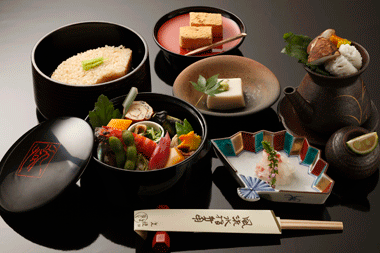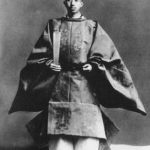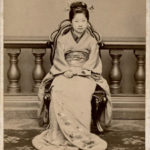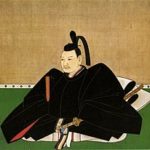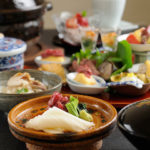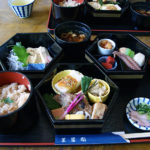If you ever have the chance to travel in Japan, at some point you’ll probably either eat at a kaiseki restaurant or have meals served to you kaiseki-style. So what exactly is kaiseki?
Very basically, kaiseki (also known as kaiseki-ryori), is Japanese haute cuisine. Kaiseki consists of multiple courses that are beautifully presented, usually in small, eye-catching dishes. A kaiseki meal also usually emphasizes seasonal foods and simplicity of ingredients.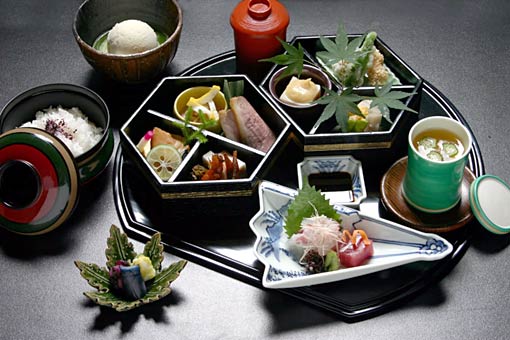
The Origins of Kaiseki.
Kaiseki began centuries ago, sometime in the 1300’s. The practice of serving many dishes of elaborately presented foods stems from the highly stylized and very formal Japanese tea ceremony meal, or cha kaiseki, which was typically limited to aristocracy. Kaiseki was refined over several centuries by feudal lords, eventually evolving into the cuisine we know today. (And lucky for most of us, modern kaiseki is no longer limited to aristocracy.) Today, Kyoto is probably the most renowned spot for kaiseki.
According to Kyoto Visitor’s Guide, kaiseki has a prescribed order and consists of the following courses:
Sakizuke – A light appetizer served with a ceremonial cup of sake;
Hassun – 3, 5 0r 7 hors d’oeuvres on a single plate that represent the season;
Mukozuke – Platter of sashimi with sauce;
Wanmono – Soup served in a covered bowl;
Yakimono – Grilled dish, usually fish, that is either salted or teriyaki-glazed;
Nimono – Simmered meat and vegetables (usually seafood or fish);
Hanmono – Rice and pickles, and the final soup of the meal; and finally,
Mizumono – Dessert, either western or Japanese-style.
Now that is a lot of food (and a lot of preparation)!
Kaiseki is More than Just a Beautiful Way to Try Various Foods.
One of the most important things about kaiseki is that it embodies Japanese culture. Modern kaiseki is based on tradition, and its preparation both preserves and perpetuates Japanese heritage. Essentially, when you experience kaiseki, you are dining just as the Japanese feudal lords and their courts did centuries ago.
Because it is so complex, preparing kaiseki takes years of training. This is because kaiseki requires an expert palate and an artistic eye. Each kaiseki course emphasizes presentation, reflected in food’s placement on the plate and the chef’s selection of garnishes (all of which have balanced flavor and color). Such attention to detail makes the meal pleasing to the eye and the taste buds. In fact, the Japanese believe a beautifully presented meal enhances the taste.
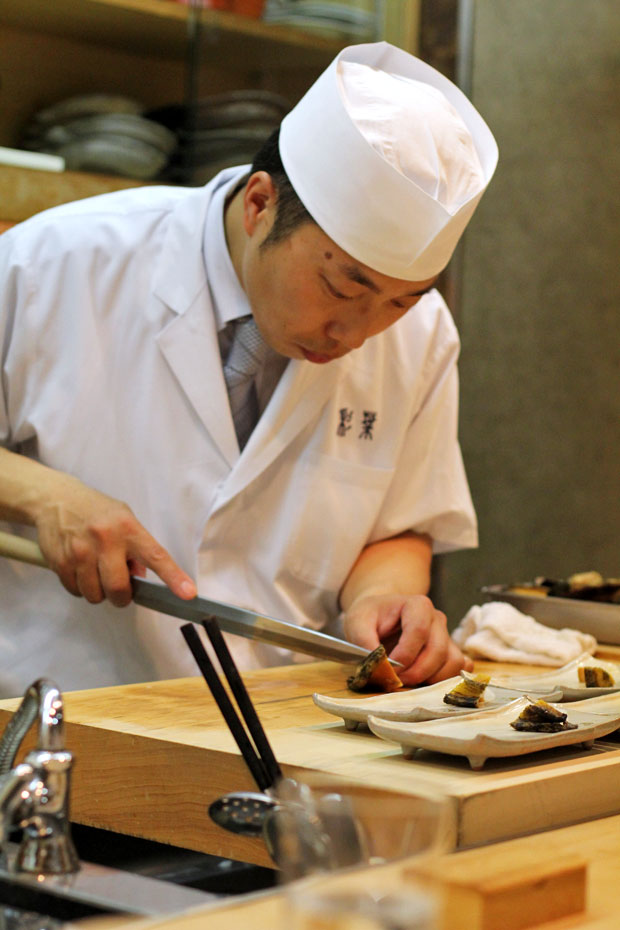
Now that you know what Japanese kaiseki is and can appreciate all of the effort that goes into it, hopefully you will enjoy this delicious traditional meal even more.
Source: Kashiwaya , Kyoto Visitor’s Guide
Images: Top , 1 , 2 , 3 , 7 , 8

